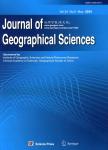The mechanism of farmland marginalization in Chinese mountainous areas:Evidence from cost and return changes
中国山区耕地利用边际化过程机理——基于成本和收益变化的分析(英文)作者机构:Guangdong Open Laboratory of Geospatial Information Technology and ApplicationGuangzhou Institute of GeographyGuangzhou 510070China Key Laboratory of Land Surface Pattern and SimulationInstitute of Geographic Sciences and Natural Resources ResearchCASBeijing 100101China University of Chinese Academy of SciencesBeijing 100049China
出 版 物:《Journal of Geographical Sciences》 (地理学报(英文版))
年 卷 期:2019年第29卷第4期
页 面:531-548页
核心收录:
学科分类:07[理学]
基 金:GDAS'Project of Science and Technology Development,No.2018GDASCX-0903,No.2017GDASCX-0101,No.2018GDASCX-0101 National Basic Research Program of China(973 Program),No.2015CB452706 National Natural Science Foundation of China,No.41801101,No.41161140352
主 题:farmland marginalization farmland abandonment labor costs returns agricultural labor productivity mountainous areas China
摘 要:Farmland marginalization has become the main trend of land-use change in the mountainous areas of China. Using annual survey data of major agricultural production costs and earnings at national and provincial levels in China, this study aims to analyze the reasons and mechanism behind farmland marginalization in mountainous areas. We find that farmers on plains are able to reduce their per mu labor input effectively through intensive use of agricultural machinery, which has minimized the impact of the increase in labor price. However, it is extremely challenging for farmers in mountainous areas to use the same method owing to the rough terrain. Thus, per laborer farming area in these areas has increased relatively slowly, causing a widening gap in agricultural labor productivity between the two regions. With the rapid rise in labor costs since 2003, the marginalization of cultivated land in mountainous areas is evident. In 2013, the net profit of agricultural production in mountainous China fell below zero. Since 2000, the land-use and land-cover change in these areas was characterized by the reduction of farmland area, reforestation, and the enhancement of the NDVI value. The high correlation between the NDVI change rate and the ratio of change in farmland(r = –0.70) and forest(r = 0.91) in mountainous areas at provincial level further attests to the trend of farmland marginalization there. Finally, we summarize the mechanism of such marginalization against the backdrop of the rapid increase in the opportunity cost of farming and the rapid fall of agricultural labor forces in mountainous areas. This study contributes to a deep understanding of the development process of farmland marginalization and abandonment as well as forest transition in Chinese mountainous areas.



